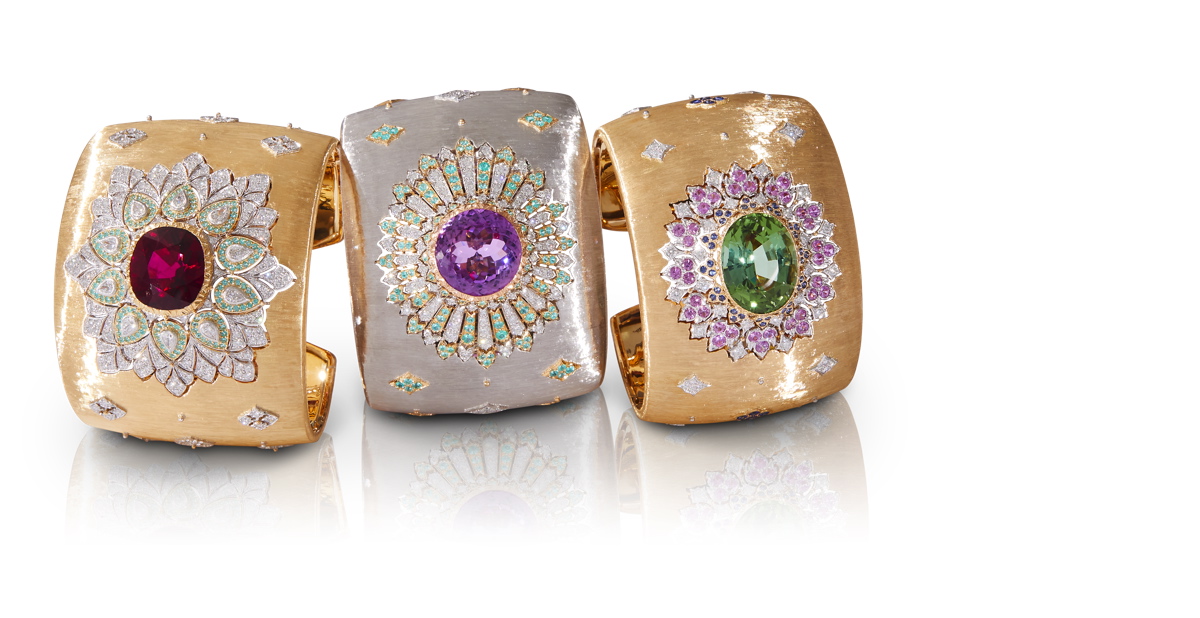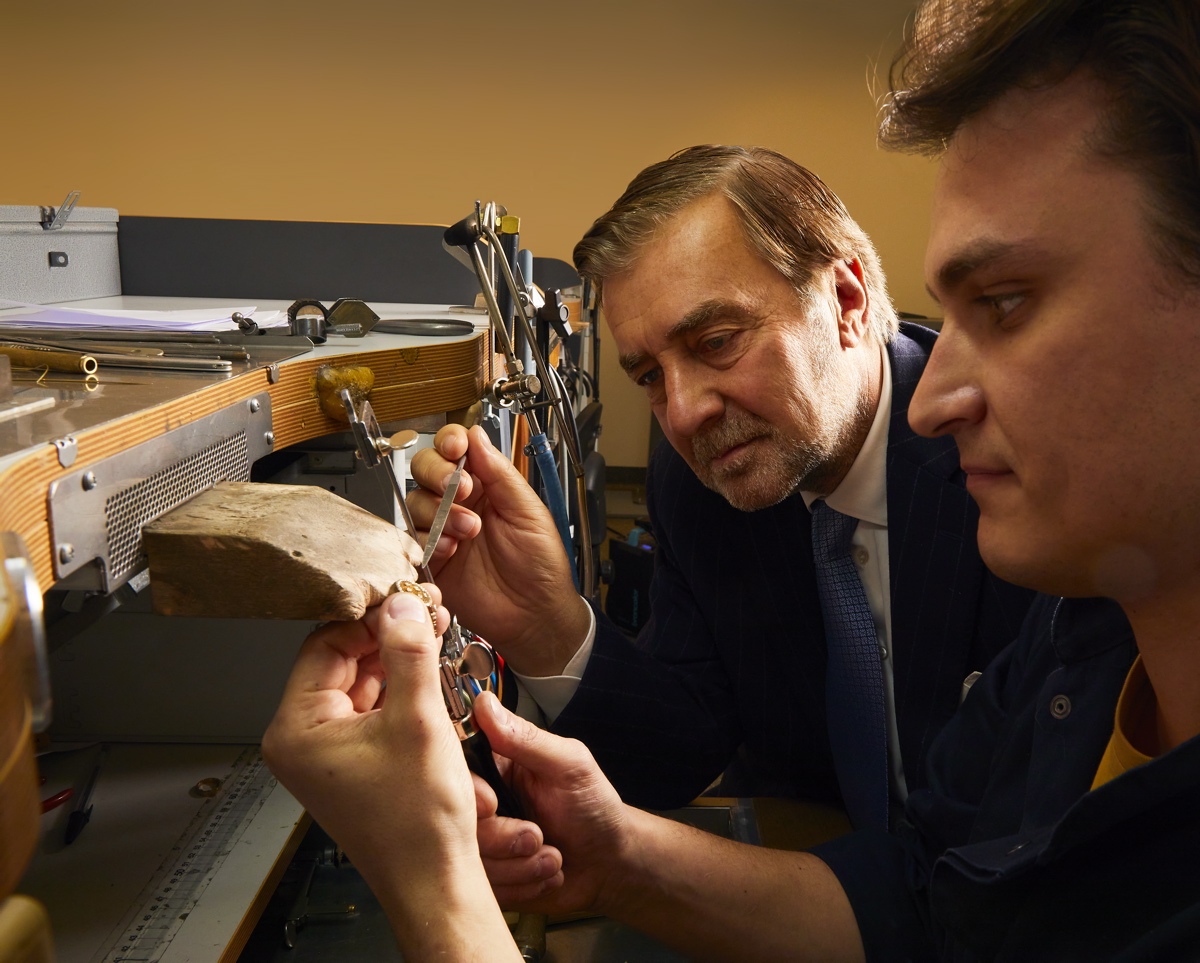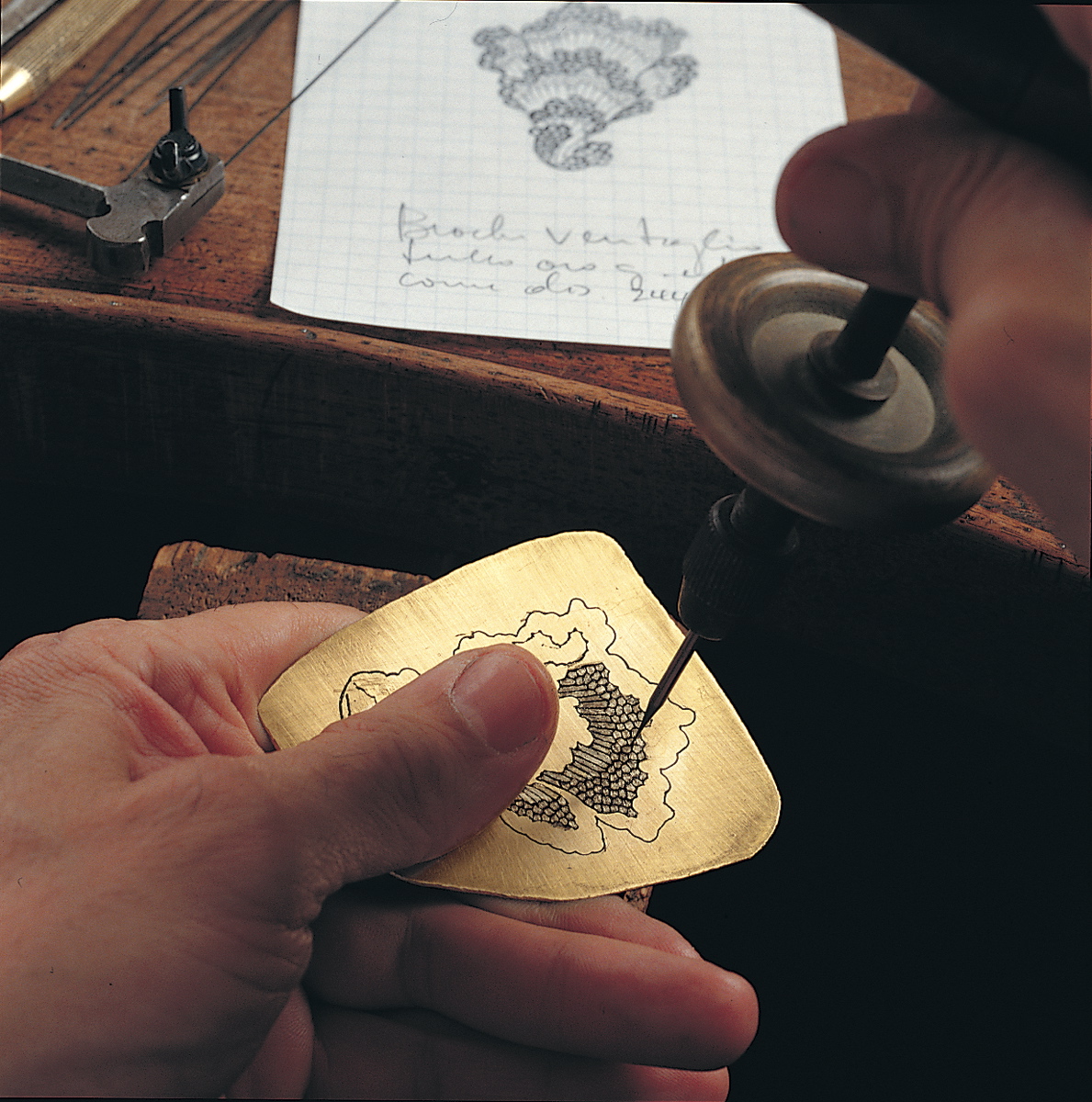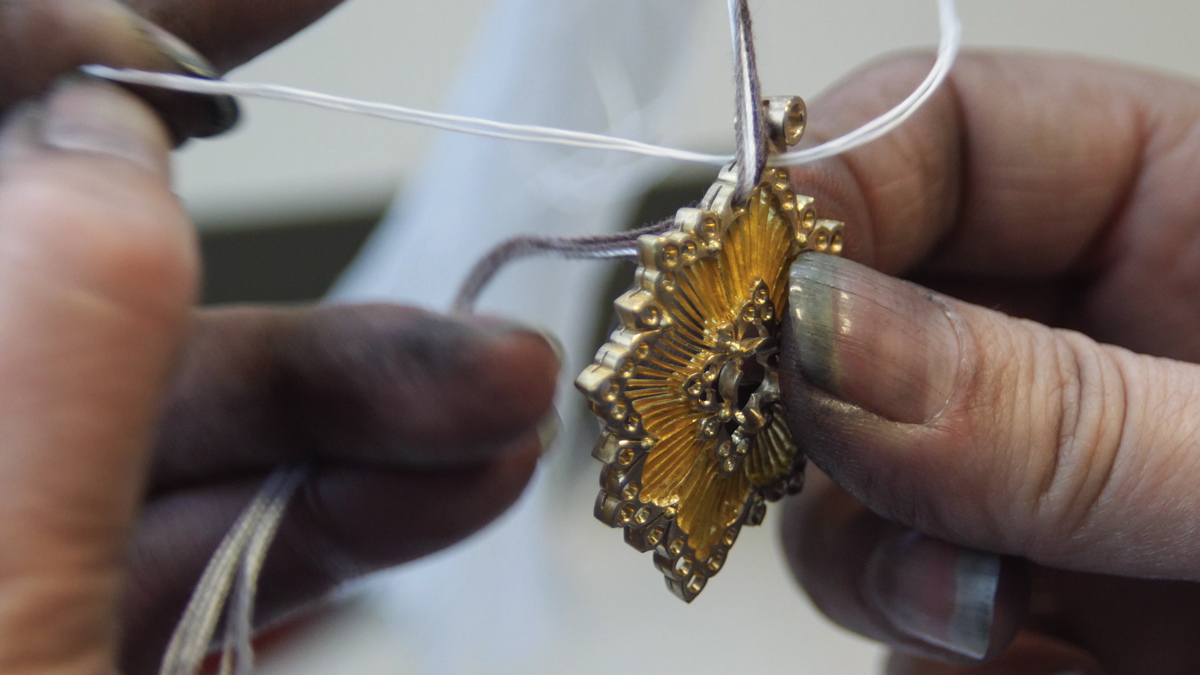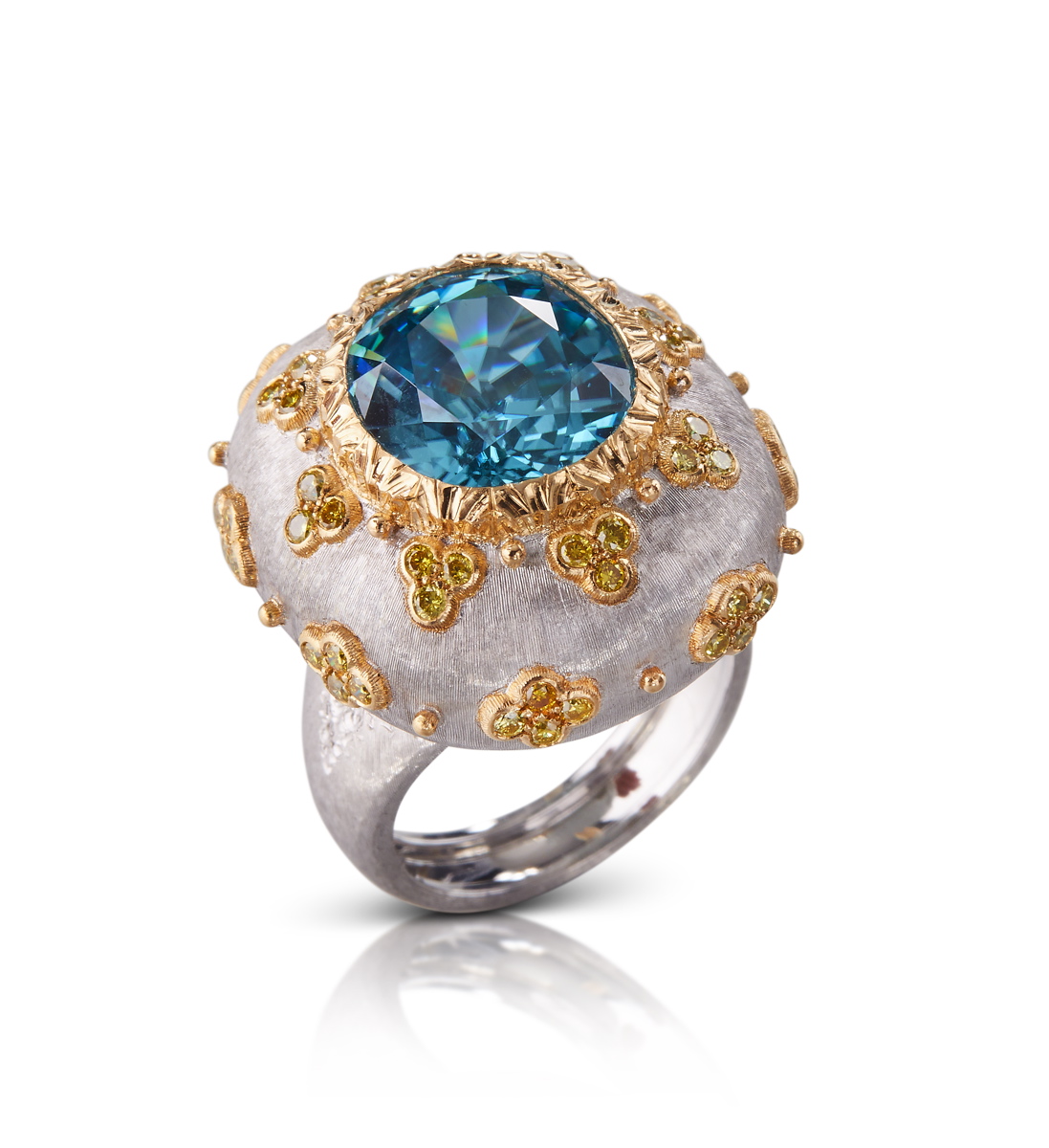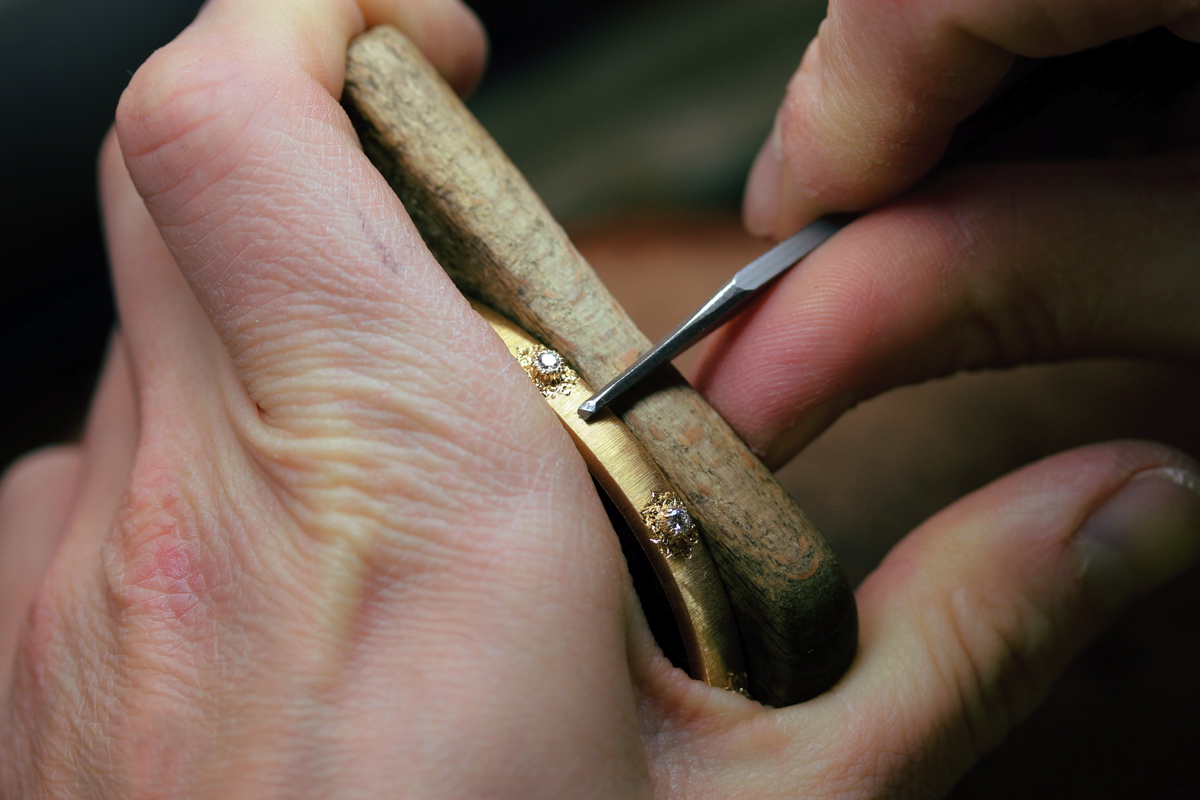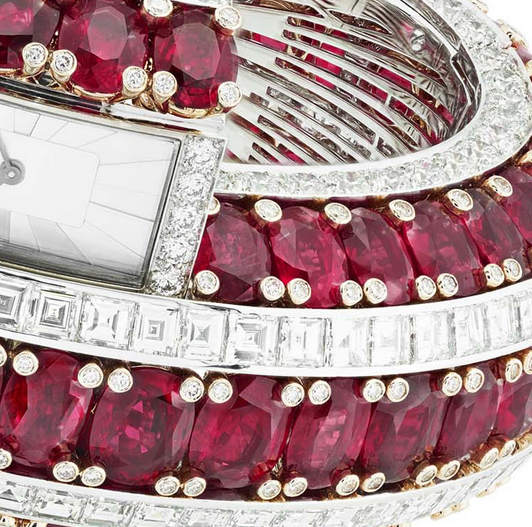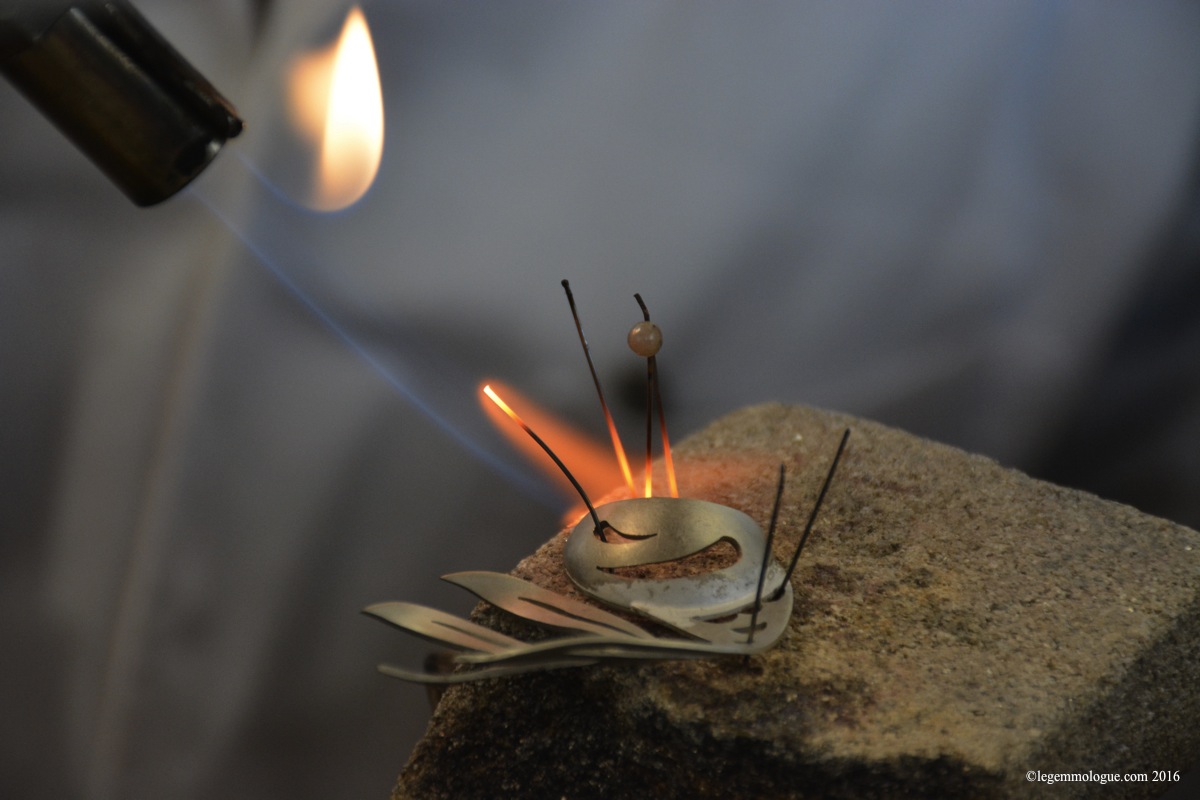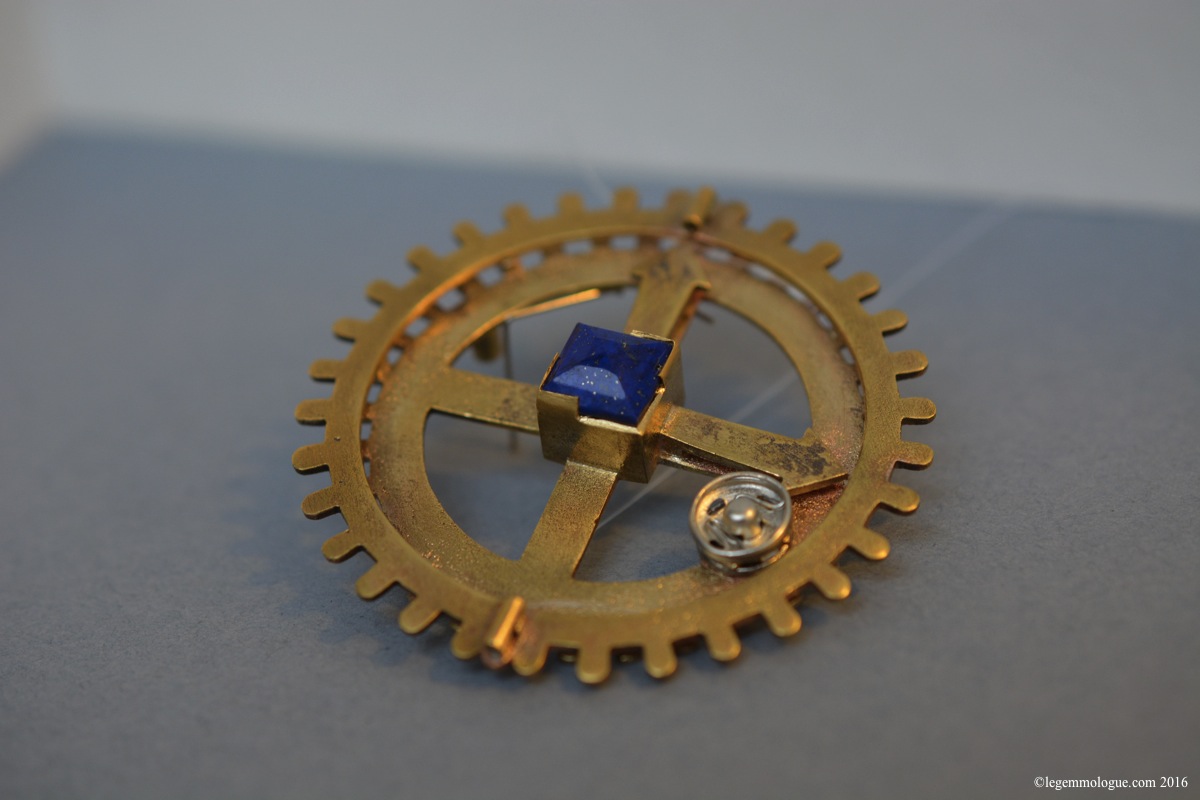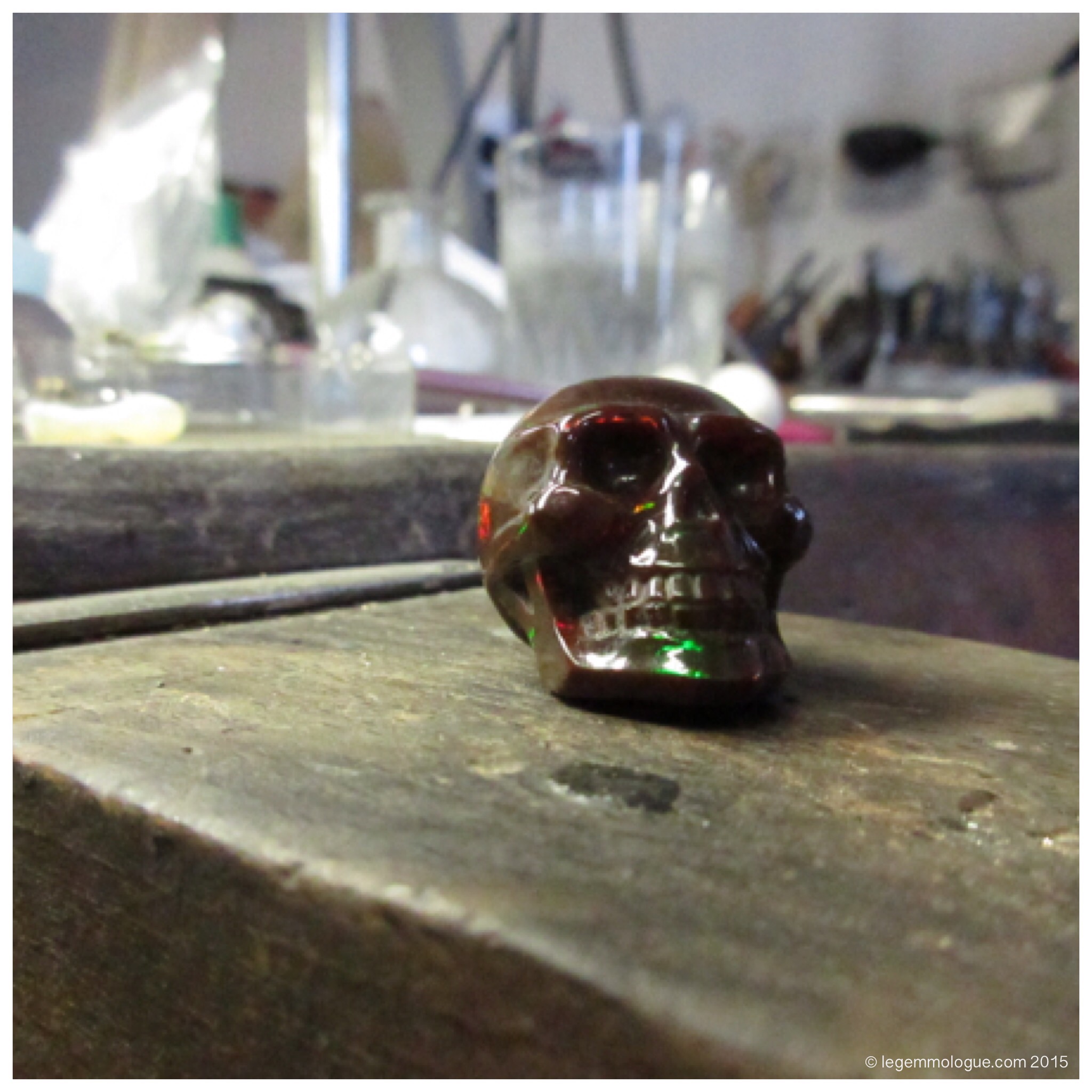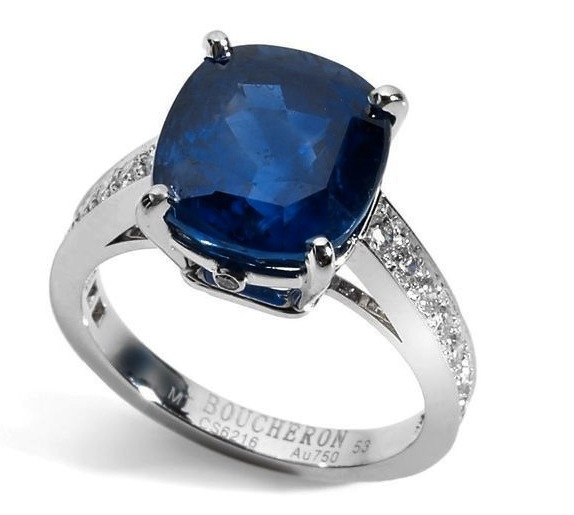Buccellati has been creating its own music for a long time now. Rigato, Telato, Segrinato, Ornato & Modellato, all technical terms whose musicality is expressed as soon as you say them. But what exactly do they mean? Behind these lilting words, there are men and women, mainly based in Lombardy, who perpetuate the skills of the engraver, sometimes bordering on chiselling. A craft that the Italian company uses and abuses to the great pleasure of its customers and aficionados of rare and precious manual crafts. To better understand the extent of these techniques, I interviewed Andrea Buccellati, Honorary President and Artistic Director of this house.
Mr. Andrea Buccellati with one of his craftsmen. Photo: Buccellati
1- Why did you base the Buccellati style on these engraving and chasing techniques?
I would not say that the Buccellati style is based on engraving techniques. I would rather say that Buccellati uses all possible goldsmithing techniques, also techniques from antiquity, among which we find engraving and chasing. The fact that we are one of the few jewellers to use these techniques, of course, makes our work (and therefore these techniques) more visible.
2- How did you make this choice from the very beginning of the company, to the point of making it a stylistic signature?
In fact, they have been present since the beginning, since the creation of the company by my grandfather Mario, in 1919. And it was he who first became fascinated by them and decided to revive them, and we still use them so much that they have become one of the stylistic signatures of our jewellery. You can’t separate them from a piece of Buccellati jewellery.
Three bracelets from Buccellati’s latest high jewellery collection. Made of gold, hand-engraved, enhanced with diamonds, sapphires, Paraiba tourmalines and also 1 rubellite of 18.52 ct, 1 kunzite of 23.31 ct and a green tourmaline of 20.11 carats. Photo: Buccellati
3- There are 5 very specific chasing techniques. How do you recruit the craftsmen who work for the company?
There are different types of engraving, five techniques are very well known but there are others. Our craftsmen have studied for this kind of work, and they increase their skills in our workshops. There are schools but often you go into a company where you learn your trade. The method of recruitment is the same as that used in the old “botteghe”(workshop shops) centuries ago. Young people who want to do this job and have studied for it are recruited and work in our workshop alongside skilled craftsmen. They learn all the secrets and increase their skills. This will be the time when these young people will teach the younger generations. The handing down of the trade is often done in the workshops which are family owned. Children follow in the footsteps of parents, uncles, aunts, etc.
Drilling before cutting in a jewellery project of the house. Photo: Buccellati
4- How many years does it take to train a skilled craftsman to do a job in your house?
It depends a lot on the learning capacity: some learn faster, others slower. Some are more precise, others less so, and there are different personalities. Let’s say it takes more or less 7 to 10 years to have a fully qualified craftsman, fully responsible for his work and able to make decisions independently.
5- Is one craftsman able to do all the techniques or, on the contrary, is it necessary to have one craftsman for one technique?
Every fully qualified craftsman can use all techniques. Of course, each craftsman has his own preferred inclination: more geometrical, imaginative or other. After making the sketch, I decide which craftsman is best suited to execute the project.
Polishing stage in a Vega earring. Photo: Buccellati
6-Can these techniques be modernised or can the human hand never be replaced?
It depends on what you mean by the modernisation of techniques. I am convinced that the human hand can never be replaced to obtain the results we have today. I have always believed that the imperfection of the human hand is what makes an object unique, because this imperfection cannot be reproduced mechanically.
7- How long does it take to engrave a piece such as one of your solid bracelets?
Engraving on our cuff bracelets can take about 15 to 20 days, and sometimes even longer.
8- Would you consider creating pieces without engraving or chasing?
No, never! Engraving is part of our DNA!
The Agarepo ring is made of gold, hand engraved and set with diamonds and a 12.09 ct blue zircon. Photo: Buccellati
9- I was particularly impressed by the Sadar and Centaurea necklaces. How do the jewellers, setters and engravers/chisellers work together to create such pieces? In what order do the craftsmen intervene to obtain this level of finish?
The origin of a piece of jewellery is the design and its inspiration. I see the design with the jeweller and explain all the technical characteristics to execute it. Then the jewel is engraved by hand, set and polished at least twice, after the goldsmith and before the quality control. Sometimes these steps are not respected, because on the same object there can be several steps of engraving and setting. During all these steps I regularly check if the work is well done, until the final quality control. This is what allows me to offer you pieces with this impeccable finish.
Engraving stage in the workshop with the realization of a motif called “Rigato”. Photo: Buccellati
See you soon!
